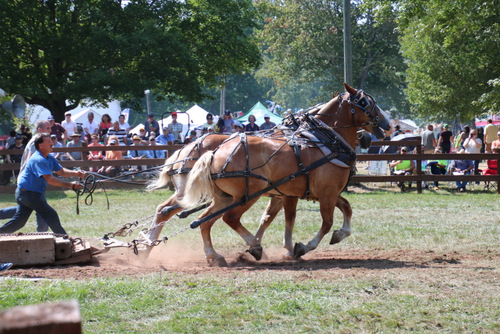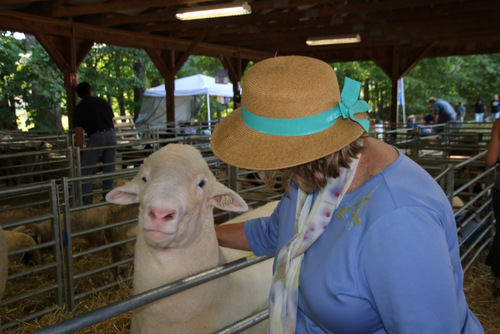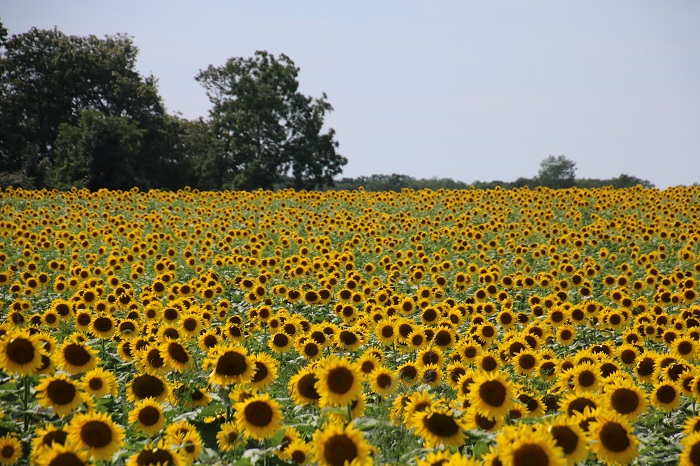It’s Labor Day, the first truly chilly morning of the season, and I LOVE it! There will be a few more days of summer heat before we hit the equinox, but summer is winding down. I can feel it in the air and see it in the trees. In spite of hurricane Hermine heading northward, I feel autumn coming.
The month of August has hurtled by me. I had lots and lots of doctor appointments, and in between them, I tried to very hard to enjoy one workshop on ec0-dyeing and as many days of weaving and lace making as I could manage. Looking back, I feel fairly productive!
If you haven’t tried Eco-dyeing, give it a whirl! There is nothing like unwrapping a scarf or fabric to find some lovely imprints of leaves and flowers. If your first attempt doesn’t suit your taste just put the fabric/scarf away and try it again on another day. That’s what I’m doing this morning as I write this. I have a 1-yard length of lightweight linen and one silk scarf steaming. I used the rinse and spin cycle of my washing machine to re-wet them, and I just collected a few leaves on my morning walk: one small branch of Japanese maple with about a dozen leaves on it, some golden rod fronds with buds ready to open rather than in bloom, and a few fronds of sumac.
When I got home I spread out my damp linen fabric and silk scarf and placed my plant materials on half of each length of fabric or scarf, because I will fold the other half over to cover the plant material. To the things I gathered on my walk I added a few gems from my garden. Today I am trying tall ferns that I hope are ostrich ferns, since I read that those work well in eco-deying. I have a few dark purple oxalis leaves, some purple cranesbill flowers as well as leaves, some coleus leaves, and one small spray of red flowers from a dragon wing begonia. As I write this I realized I meant to to pick some hyacinth bean leaves and flowers. The leaves of the purple hyacinth vine have such dark veining, it might work very well in this technique. Drat! My fabric is already in the steamer.
Here are a couple of sites that I found very helpful in trying this technique. Sherry Harr did her doctoral thesis at Kansas State University on various textile dyeing techniques, and her article is quite thorough. There are several blogs where the authors have documented their plants and techniques rather well. Take a look at Threadborne and Obovate Designs.
In mid-August a few people from my local area guild got together and shared lots of plant material and had a go on our various fabrics and scarves. None of us had ever done this before, but we shared the internet info we found, and a couple of us had talked to others who had taken a workshop with Amelia Poole, whose work in this technique is stunning.
With a bit of info and a LOT of enthusiasm, we plunged ahead. We were quite lucky to have the use of Kate’s wonderful weaving/dyeing studio for this project. Here you can see how we layered the tubes of fabric with sticks to keep them from touching. To make the steamer there are some rocks and sticks at the bottom of the pan to keep the tubes of fabrics above the water level.
The taller tubes of fabric went in this make-shift steamer.
After 30 minutes of steaming and a little time cooling down, our tubes came out of the pot.
Unwrapping and hanging our scarves and fabric to dry on a rack. We were pretty thrilled with our results.
My first scarf turned out better than the other things I tried that day.
Look at the imprint from this giant dahlia.
I hope to compile a list of the plants and flowers that work best for me. Some things leave behind wonderful colors, but the imprint is just a blob. I’m more interested in the things that leave an actual impression of the leaf or flower. So far, this is my list of A plants and flowers:
Japanese maple leaves–great leaf definition
coleus leaves–faint leaf definition and pastel colors, lovely on silk
golden rod–great definition for leaves and flowers
purple oxalis–great definition
black hollyhock flowers–a wonderful, deep purple ‘blob’
cranesbill, purple–nicely shaped ‘blob’ somewhat recognizable as a flower silhouette
One of the perks of visiting the studios and houses of other weavers, is seeing the lovely details in their living and work spaces. Weavers usually have such a eye for beauty.
It was a glorious day for our project.
Fast forward to the beginning of September, and on this stunning weekend I spent a wonderful day at the monthly meeting of bobbin lace makers in Connecticut. You can find us here.
We met outside in a member’s garden under a canopy of billowing, striped canvas. Her terrace was surrounded by flowers–black-eyed Susans, phlox, and other late season bloomers, with a view of her large vegetable garden nearby, and in the distance her bee hives. She made an English cream tea for us that we had to share with the bees. Her tables were covered with vintage white on white embroidered cloths, topped with vintage linen tea towels that commemorated Queen Elizabeth’s reign–going back as far as her silver jubilee. I think we all felt a bit regal.
I hope Mary won’t mind that I shared this photo. Her expression is a mirror of how much we were all looking forward to having these treats!
Our hostess made Earl Grey tea biscuits dipped in chocolate that were off the charts!
On top of this wonderful tea we all actually spent time making lace, too!
This is also the weekend of the Haddam Neck Fair. Late summer is the time for all kinds of festivals that celebrate farming and animal husbandry. I have never been to this particular fair before, and it was a wonder.
First there were the animals. We watched a draft horse pulling contest, visited the goats and sheep, cows, chickens and rabbits. The textile displays were very small, but I met a woman on the fair committee, doing a spinning demonstration, and she hopes to grow the textile area of the fair in coming years.
Look at this beautiful Dorset sheep. Her new fleece growing back was as thick as felt and she loved attention.
Multi-colored Jacobs.
Seeing all the awards for best sheep or cow, all the way down to best cakes, and cupcakes, best flower arrangements, and best single flowers, or best zucchini, made Bob exclaim, “No one can possibly doubt humans’ need to compete!” Along a row of bud vases that showcased individual marigolds, the judges had written such poetic comments as: “As beautiful as a sexy, 1940s film star!” And, one a rose that no longer had a single petal left, “A stunner! Well done!”
I particularly like this arrangement of succulents in a well used frame. Clearly the judges did too.
Some whimsical flower arrangements. There were lots of categories for flower arrangements, and these were two in the category inspired by food. A tray of floral cupcakes!
And a slice of mum cake! The same kind of judges’ comments showed up on all the individual vegetables, from tomatoes to summer squash, to cucumbers. If you can grow it or make it, you can compete with others at some local fair!
The same kind of judges’ comments showed up on all the individual vegetables, from tomatoes to summer squash, to cucumbers. If you can grow it or make it, you can compete with others at some local fair!
It was a beautiful day, and it was quite lovely to see how much care and attention can go into growing a zucchini or a marigold!
Sadly, the textile area could not hold a candle to the livestock or the flowers and veggies. Maybe that will change in the future. All it will take are a few textile people who want to compete!
The day is getting away from me, and I should turn my attention to Archie’s book and to that never-ending boundweave project.
I’ll end with a recap of what I learned today. The tall ferns in my garden must not be ostrich ferns since they left no color. I did add some hyacinth bean vine, both leaves a clusters of flowers buds, but they also left no color or imprint.
Clusters of purple verbena flowers are interesting–they turn turquoise!
And signet marigolds left an interesting imprint. The red stripes turned black.
And speaking of flowers, I have to share one last image. The well known, oft-photographed field of sunflowers on the north fork of Long Island. Bob and I sailed to Sag Harbor and stayed for almost a week back in the middle of the month. Even when compared to an amazing dinner at the American Hotel, and wine tastings along the North Fork, seeing this field was the highlight of that trip!
Now to work!






















Thanks for posting on my blog and just how I found yours. I love the lovely display of your work and the goodies looks tempting.
Your descriptions of ecodyeing make me want to try. Continued good wishes for your health and textile experiments.